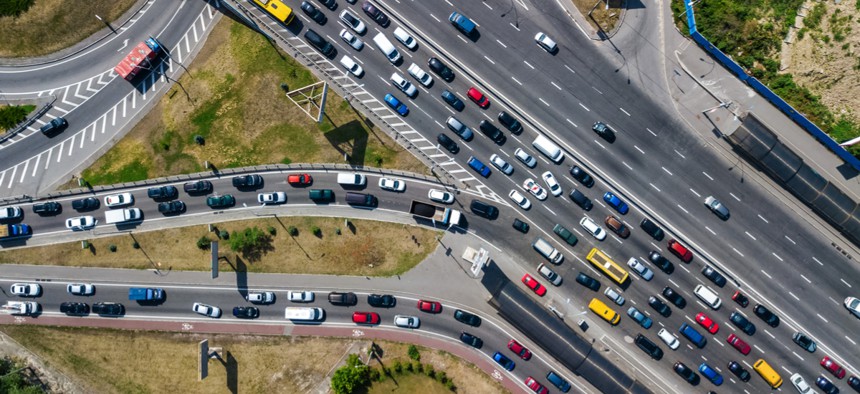Transportation Wants to Use Data to Predict Accidents and Make Roads Safer

JaySi/Shutterstock.com
The Transportation Department collects a wealth of data on traffic accidents but can't present it in the most impactful way to policymakers.
When it comes to data, the Transportation Department is all dressed up but not sure how to present itself.
While the agency collects incredibly detailed information on roads, vehicles and collisions across the country, it lacks the tech to present the data in an appealing, accessible way. But today the organization is building tools that could give state and local policymakers specific pointers for improving safety on their roads.
“Simply visualizing data ... may spur new ways of thinking,” said Derek Kan, Under Secretary of Transportation for Policy, in a conversation with Nextgov. “If you present it in a visually compelling way, you can drive better outcomes and create better insights,”
As the former general manager at Lyft, Kan saw firsthand how data on location, speed and other factors can reveal problems and offer solutions if it’s presented in the right way. But advanced analytics and visualization tools are relatively new to the world of transportation, especially in government, he said.
On average, roughly 37,000 people die every year on U.S. roads, and the National Highway Traffic Safety Administration knows virtually all there is to know about those accidents. Using the Fatality Analysis Reporting System, the organization compiles some 200 data points—including speed, direction, passengers’ seating arrangements, vehicle make, model and more—on every fatal collision that occurs on U.S. roads.
In Kan’s eyes, the annual FARS review is “one of the best reports the U.S. government puts together,” but the data presentation looks so outdated it “could be on parchment,” he said. The FARS and reports like it contain insights policymakers could use to improve traffic safety in their jurisdictions, he said, but they’re too often buried within extensive, monotonous data tables.
But the department has already started building tools to visualize FARS data, and the private sector is also chipping in to make new insights pop off the page.
On Friday, the department announced the five semifinalists in its Safety Data Challenge, a competition to visualize proprietary and public traffic data in ways that shed new light on safety and crash prevention. The semifinalists—which include Ford and Uber—will now create proofs of concept for their tools, and two finalists will eventually compete for a $250,000 cash prize.
The department plans to publish the winning tools online so groups across the country can immediately begin using them to inform policy decisions, according to Kan.
He said tools that combine multiple datasets offer a much more holistic view of traffic safety, and that big picture view can inform more nuanced safety policies. For instance, overlaying accident data with information on road conditions can reveal why some intersections and streets are more dangerous than others, he said. Add weather conditions, time of day, nearby events and other factors, and governments can get “a pretty good estimate” of when and where accidents will occur and make policy decisions accordingly.
“[It’s] sort of like bringing electricity to the fire age,” said Kan.
Like many other agencies, Transportation sees data governance and standardization as critical to ushering in advanced analytics and machine learning tools, and it’s beginning to explore ways to link its disparate datasets, according to Kan.
“If you can marry some of these things together you can unlock tremendous value,” he said.
While it’s unlikely the government will use analytics tools to make sweeping transportation policy changes, the agency could eventually create best practices for adopting data-driven policies at the state and local level, he said. And while there are some issues where lawmakers might debate the merits of data-driven policy, safety is something Kan thinks everyone can stand behind.
“Fatal accidents are clearly a public safety [hazard] that we should all be looking to minimize,” he said. “It's an outcome that's pretty unobjectionable.”






